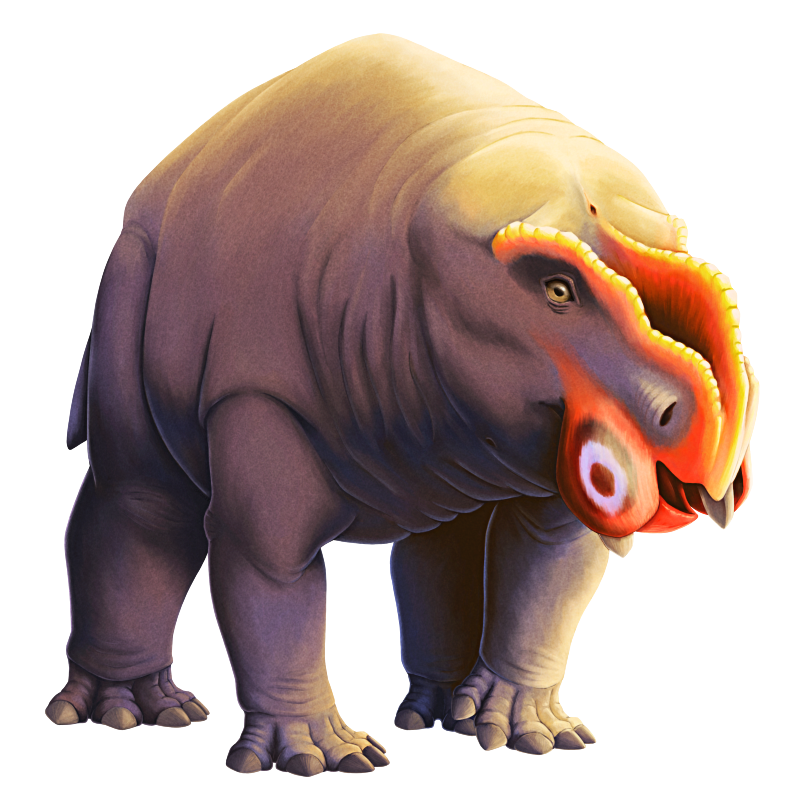Rechnisaurus cristarhynchus here was a member of the dicynodonts, a group of stocky herbivorous beaky-jawed synapsids that were distantly related to modern mammals. Living in what is now eastern India during the Middle Triassic, about 247-242 million years ago, it’s only known from a single fossil skull – but based on the body proportions of better-known close relatives like Kannemeyeria it was probably somewhere around 1.2m long (~4′).
It had a raised bony crest running down the middle of its snout, with deep bowl-like depressions on either side that probably served to make the crest seem visually larger it already was. (They probably didn’t house any weird soft-tissue structures, however, since these type of dicynodonts tended to have very extensive keratinous coverings over their snouts.)
It also had raised bony areas around its parietal eye, and extensive bony flanges covering most of its tusks giving its face a sort of jowly appearance. All these features were probably for visual display and may have been brightly colored in life.
And, while I usually like to reconstruct dicynodonts as extensively fluffy… recently some fossil specimens of Lystrosaurus have been found showing bumpy leathery skin impressions. This doesn’t necessarily mean that all dicynodonts were hairless (especially since there are still those Permian coprolites), but since kannemeyeriiformes like Rechnisaurus were quite closely related to Lystrosaurus, I’ve gone with no fuzz at all on this one.


